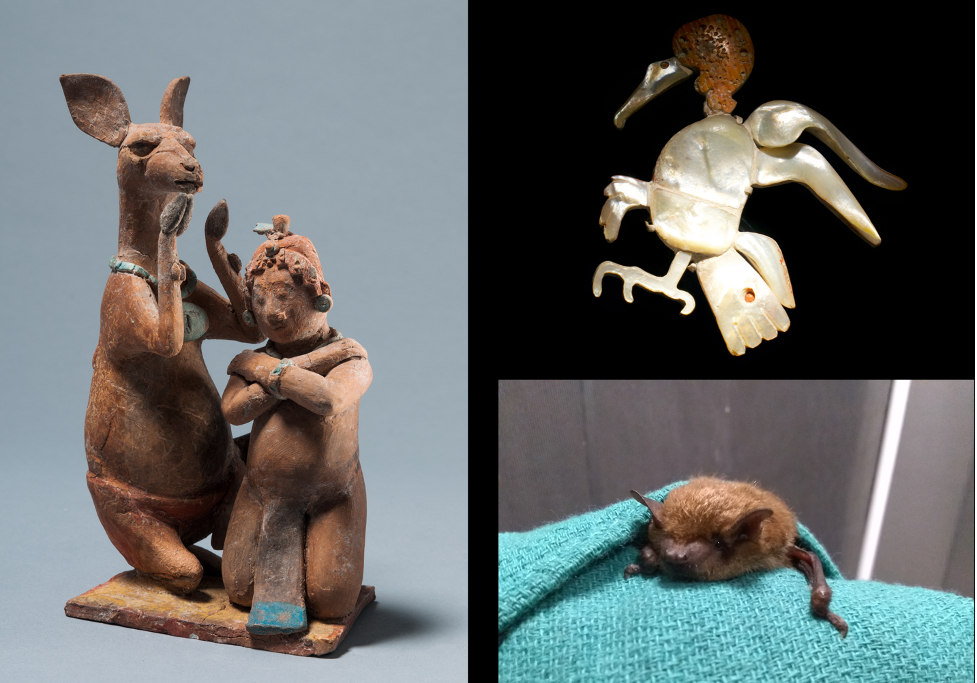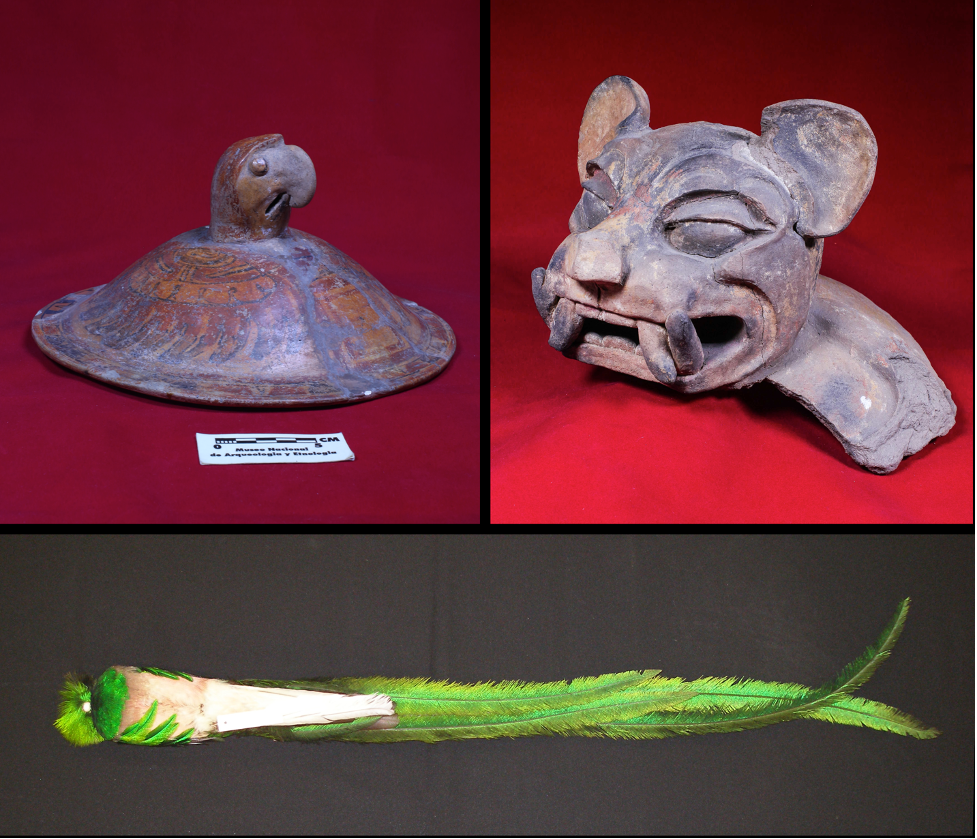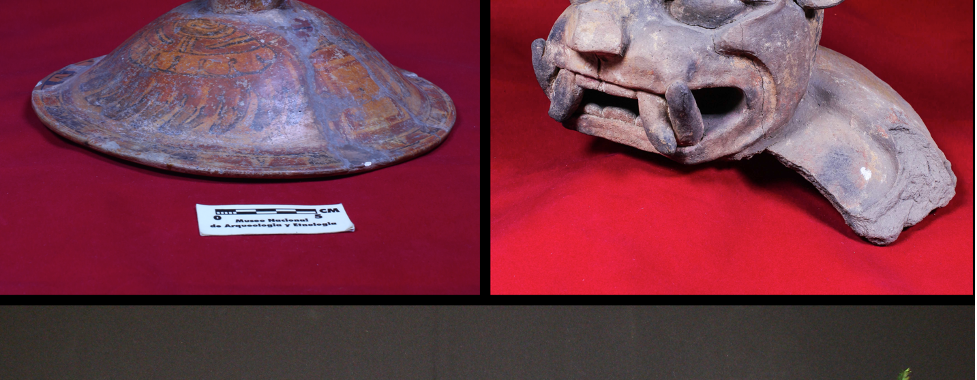
CMC Blog
Maya Mammals (and more!)
By: Emily Imhoff, Zoology Collections Manager
If you visit Maya: The Exhibition, one thing you will notice is how often animals are represented in the artifacts shown, and even in the glyphs used in their ancient writing system. Historic and modern cultures all around the world often use images of animals in their art and to decorate everyday objects. These animals might be important food sources, or religious or cultural symbols, or even pets.
We may think of the Maya culture as quite exotic, but many of the animals that historic and current Maya people encounter in their environment are also found right here in the Midwest. White-tailed deer, turkey vultures, coyotes, big brown bats, great blue herons and ruby-throated hummingbirds all live in both places. In fact, many migratory bird species that breed here in the summer spend their winters in Central America. The hummingbirds we see visiting our flowers and feeders every summer must cross the Gulf of Mexico each autumn and spring as they travel between their wintering and breeding ranges.

Maya artifacts depicting a white-tailed deer (left) and a turkey vulture (top right); a big brown bat from Cincinnati Museum Center’s Live Animal Collection (bottom right).
However, there are also many animal species found in the lands of the Maya that are not native to our region – including jaguars, Baird’s tapir, nine-banded armadillos, Central American red brocket deer, several fruit-eating bat species, scarlet macaws, dozens of hummingbird species and the national bird of Guatemala, the Resplendent Quetzal! There are over 600 native species of birds living in the region.

Maya artifacts depicting a scarlet macaw (top left) and a jaguar (top right); a Resplendent Quetzal from Cincinnati Museum Center’s Zoology Collection (bottom).
When you visit the exhibition, look for animals depicted in the artifacts. Do they look like animals you have seen locally, or are they more exotic?
If archaeologists working hundreds of years from now found artifacts of our current Midwestern United States culture, what animals would they find depicted? Look around your home, workplace or school. What animals are shown? Are they American species, or from another part of the globe? Why do you think those animals were chosen?
Museum Admission
Includes Cincinnati History Museum, Museum of Natural History & Science and The Children's Museum
| Adult: | $22.50 |
| Senior: | $15.50 |
| Child: | $15.50 |
| Member Adult: |
FREE |
| Member Child: |
FREE |
Members receive discounts!
Become a Member today to save on programs, exhibits and films throughout CMC.
Museum Hours
Open Thursday – Monday
10 a.m. to 5 p.m.
Closed Tuesday and Wednesday
Closed Thanksgiving Day and Christmas Day
Member’s-only early entry: Saturdays at 9 a.m.
Customer Service Hours:
Monday – Sunday, 9 a.m. to 5 p.m.


